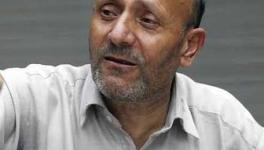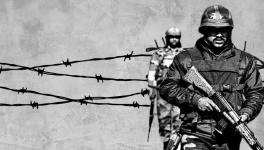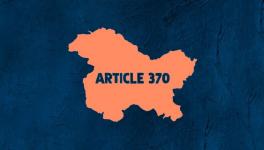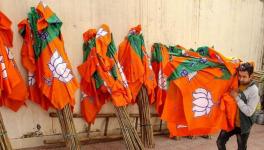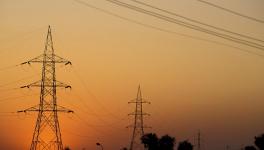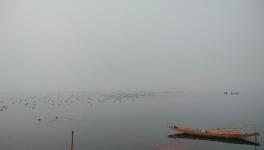The One Reason Why Brutality Defines Our Kashmir Policy
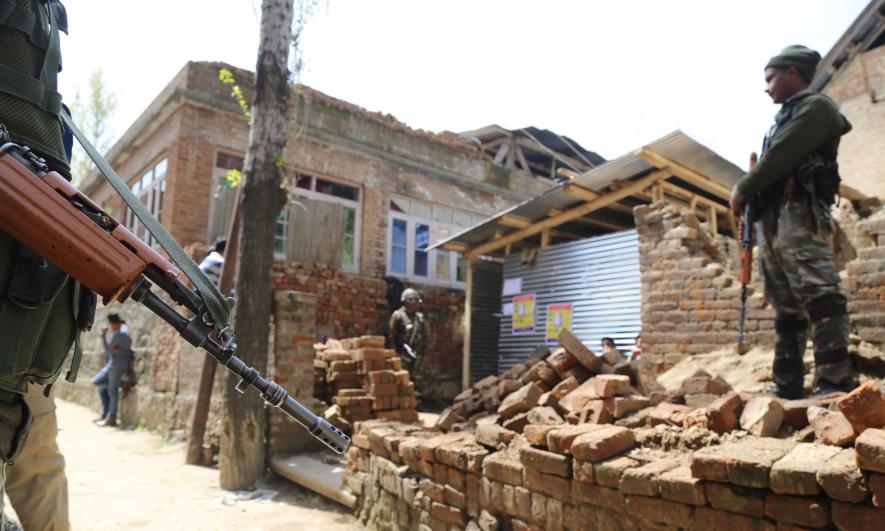
Image Courtesy: The Citizen
Two videos that have gone viral across the world. record a brutality in Kashmir that was intended to remain under cover, but has burst out of the narrative that is being systematically created and fed to the peace loving peoples of the world. And to some extent now the truth, as they say, is out which is perhaps the only reason why the government in a double flip has ordered an investigation and the state Chief Minister Mehbooba Mufti who has been silent all through the weeks and months, is trying to appear concerned.
The videos have created a huge stir with reactions (see:http://www.thecitizen.in/index.php/NewsDetail/index/1/10419/Graphic-Videos-of-Violence-By-Government-Forces-Shakes-Humanity) pouring in. But as Kashmiris point out these videos are just two incidents of what is fast becoming routine in the Valley.
To say that the government does not have a policy on Kashmir is again to obfuscate an issue that needs urgent, immediate attention. Experts and well wishers writing on Kashmir have to understand that this is not a government without a mind. It is certainly not a government that does not know what it is doing, and why it is doing what it does. It is also a government that does not always understand the consequences of what it does, as has always been the wont of those blinded by ideology, but it is a government that does not like to retract from the path it has chosen, regardless of the consequences.
So for the experts who say the government does not have a Kashmir policy, sorry it does. There is a clear cut policy set into motion in Jammu and Kashmir. Some like to call it the Doval doctrine although again that is a misnomer as there is little the National Security Advisor can do until and unless it is cleared by Prime Minister Narendra Modi. Quite unlike the Congress government where Prime Minister Manmohan Singh was always referred to as a gentleman politician, another word for a vacillator.
The policy started with pushing Kashmir to the brink. By doing to the Kashmiris what is being done to the Muslims---particularly in Uttar Pradesh currently---of beating them into submission. The first 18 months were used to push forth agendas, with the complicity and full support of the Peoples Democratic Party, that can only be described as divisive, to use a mild world. Segregated colonies, concerted attack by top leaders on Article 370 etc etc were used to heighten insecurity and threat perceptions across the state, with the Kashmiris moving from the centrist position that they had come to occupy after the Assembly elections that brought the PDP to power under Mufti Mohammad Sayeed, to the edge.
The provocation to strike at the basis of the promises that had brought Jammu and Kashmir into India was built steadily, with one after another contentious issue being voiced, articulated, pushed. Those who know Kashmir and tried to warn the government of the consequences were brushed aside, and projected instead as supporters of sedition and terrorism.
Kashmir reacted, as it was intended to initially, and it was almost as if an invisible force was pushing the Kashmiris to the edge, as the size of protests increased, as younger and younger children led the stone pelting, as the funerals of militants turned into huge silent protests. The Hurriyat set out calendars but its leaders admitted to those who met them that they were now following the people, no longer leading them.
But the policy started going wrong. As it was based on ignorance and built on a complete inability to understand the Kashmiris who are seen only from the perspective of a paranoid security system that is steeped in subjugation and shadows, and not in democracy and hence sunlight.
The narrative, aided by the powerful media, was pushed on a daily basis: Kashmiris are terrorists, that all protests are being fanned by Pakistan. The policy makers then used this narrative, sharpened, honed to justify brute force suc as the use of pellet guns in 2016 that were used ---very much like the lynchings in Uttar Pradesh today---to strike terror and silence the people. In fact a sentence often heard in Delhi from those part of the larger establishment was “why are the parents not controlling the youth from going out onto the streets.” Implicit in this was that the parents should fear for their kids, and keep them indoors. What they refused to believe was that the Kashmiri parents were not the middle class of Delhi, they were part of a ‘resistance’ of decades, and while fearful for their child’s safety were not going to shackle them. And as a working mother in Srinagar said, “we cannot, they have their own mind.”
This is about when the policy started unravelling. As it was based on fear---generating fear, controlling by fear. 2016 when the pellet guns were used with ferocity---and this was not incidental but well thought out---should have instilled this fear and taken the protestors of the streets, thereby giving the government forces and the state government a clear path to full power. That did not happen. The young people were terrified as all of us who met the youth in Kashmir in subsequent weeks could sense, but the defiance, the anger, the resentment, the alienation far outdid this one sentiment. As a father, and a well respected person in Kashmir told this writer, “I fear for my children, but I also know that I cannot stop from doing what they believe is right. I do not want my grandchildren to go through the same, but I also know that there will be no stopping them either.”
Instead the photographs and the videos that emerged from the use of pellet guns raised a storm of protest in Parliament, the government was pushed to the backfoot temporarily at least, and said that it would reconsider the use of these guns. It was also made clear that sustained use of the guns would invite howls of protest from the international media and peace groups, that in turn could eat into the happy international space that the government has created for itself since coming to power.
So the use of pellet guns was stopped, or at least brought down for a while although more recently the government came out with a statement saying it will remain in use, and will be used if the protestors do not desist.
Since then, through winter and more so since the snows melted, the paramilitary has been joined by the Army in house to house searches. And these are certainly not the gentlemanly entries that the phrase seems to suggest, but strike terror as troops barge in with guns, drag out the residents, beat those who come in their way, and re-invoke the terror of the 1990’s when these searches took away able bodied men of whom thousands have disappeared.
This too has not worked as the people of Kashmir have found security in unity, and thousands emerge from their villages moving towards what are called ‘encounter’ sites, but often are also houses where search operations are on. The effort by the people is to drive the forces away from these villages, or at least not to arrest their kith and kin. The Army and the paramiltary insist, in their narrative, that their operations against confirmed militants are thus being hindered, and hence they are left with no choice but to open fire.
In fact even after the graphic videos have gone viral, a narrative is being circulated on whatsapp that claims that the Army had come under attack from youth throwing “boulders”. It is no longer stones. And clearly this time around the videos have evoked anger from outside Kashmir as well, with the government quickly stepping in to order a probe,
In the process the Army has again been placed in the dock. The unravelling of the policy has placed the men in uniform and the people of Kashmir ---yes now the exceptions are few and far between as the 7%polling demonstrates---in direct confrontation, with the politician still pulling the strings but unable to justify its Kashmir policy with any credibility.
The situation has come to a pass now where the next stage---that could be on even as one writes---will involve huge casualties. On both sides. As the desperation will drive the people, and fatigue the paramilitary and the Army into taking positions that will draw more and more blood in Kashmir.
This track will have to be changed if the govenrment wishes to stop the consequences of its actions over the past years. How? That can only be discussed if there are signs acknowledging that violence is not the answer, and can never be the answer from a democratic state without repercussions all across. The last should be obvious in itself, but again policy build on the shadows of a security perspective alone cannot understand this, much less prepare for it.
Disclaimer: The views expressed here are the author's personal views, and do not necessarily represent the views of Newsclick.
Get the latest reports & analysis with people's perspective on Protests, movements & deep analytical videos, discussions of the current affairs in your Telegram app. Subscribe to NewsClick's Telegram channel & get Real-Time updates on stories, as they get published on our website.










